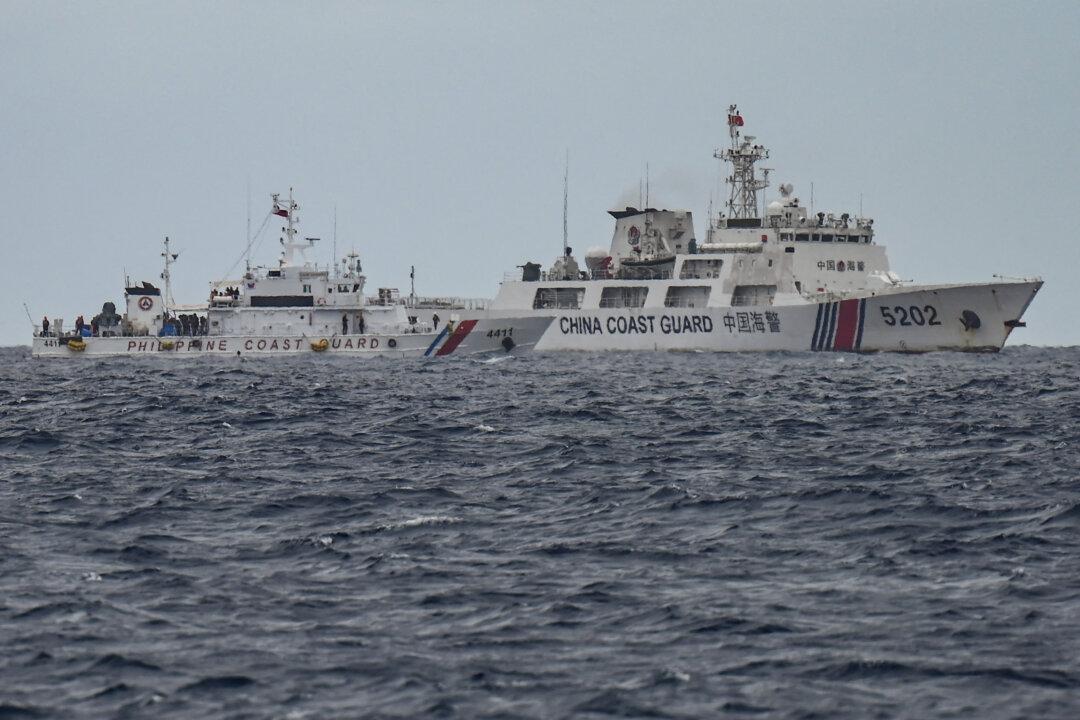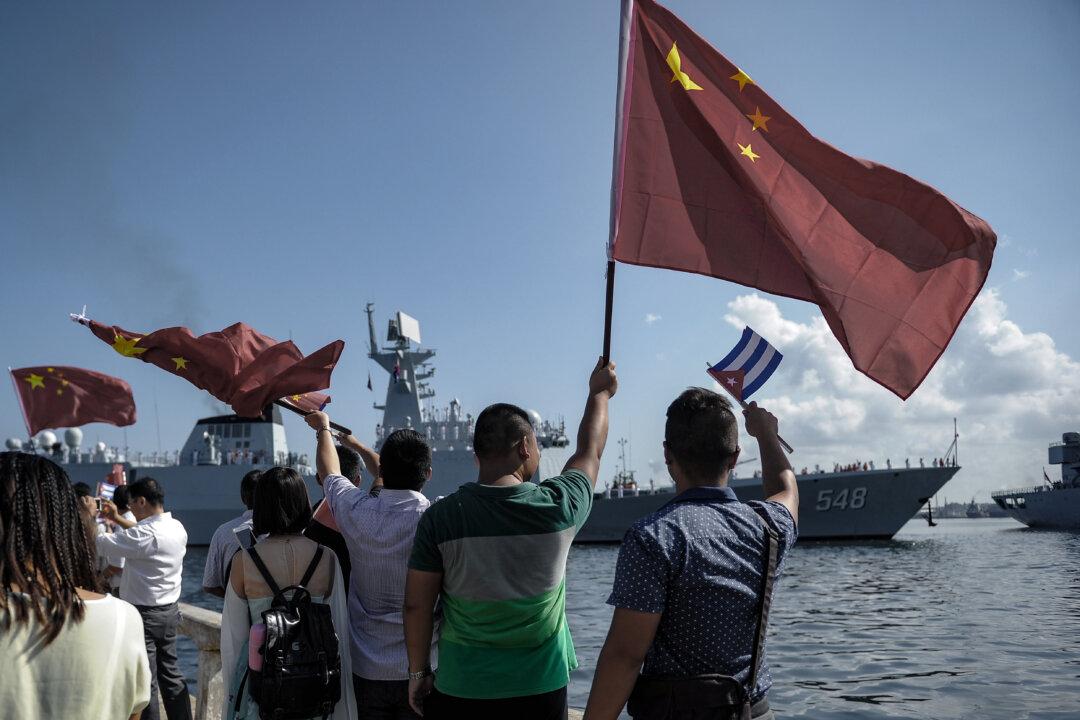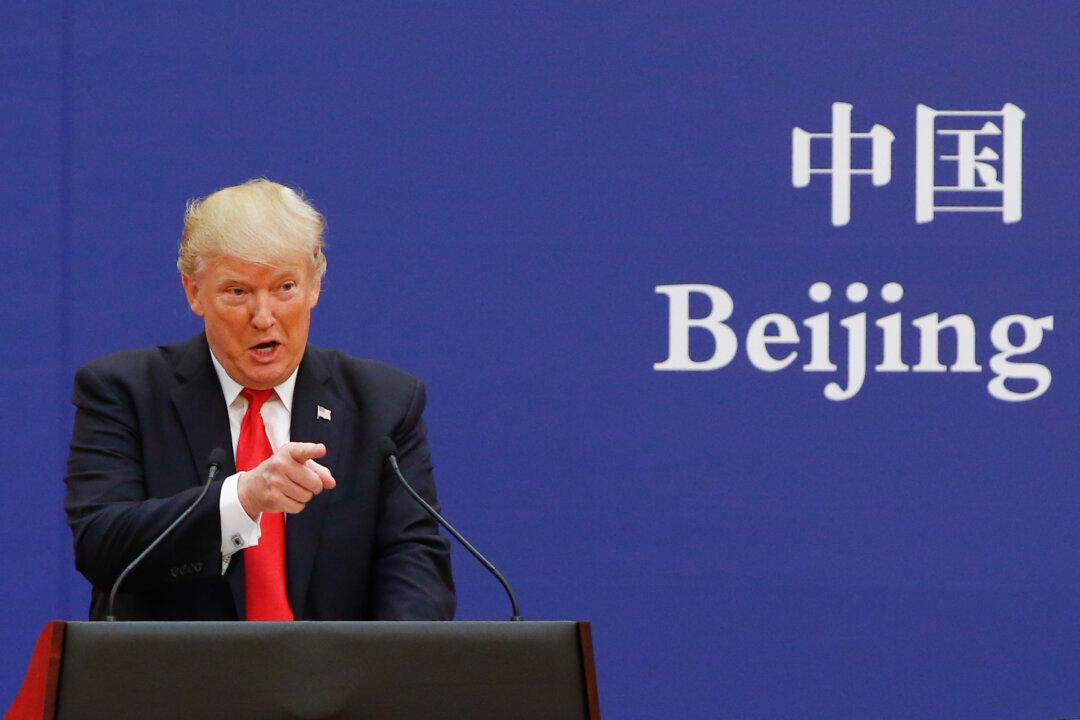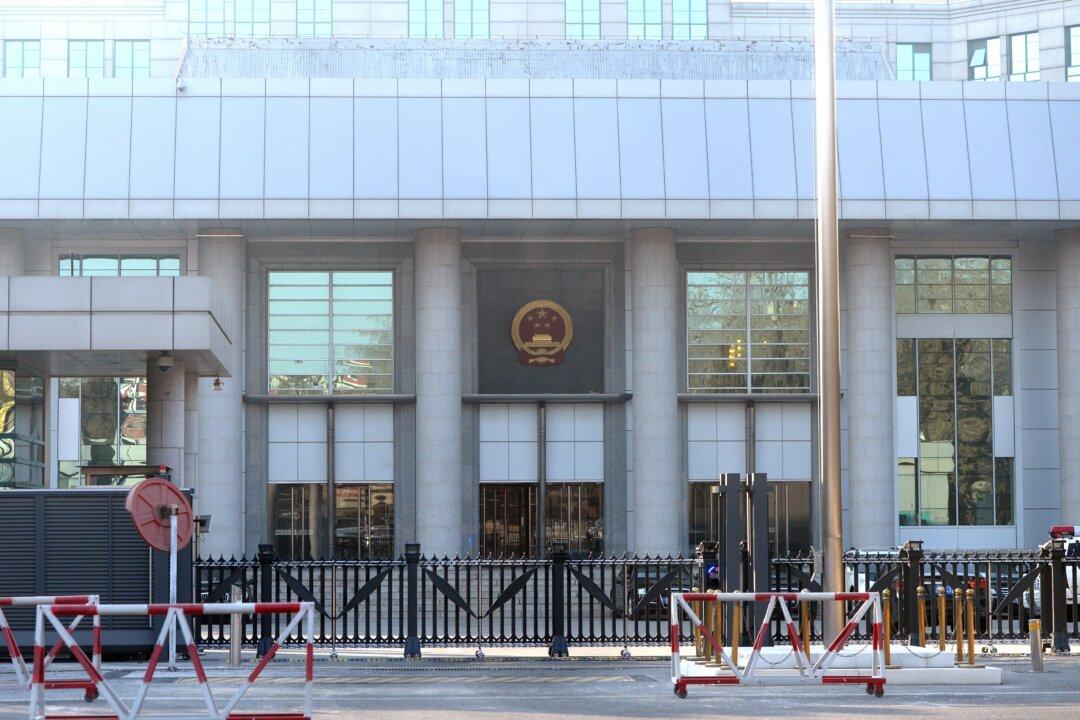All of these incidents took place close to main Philippine islands and therefore far from China. Sabina, for instance, is 124 nautical miles from Palawan of the Philippines and more than eight times that distance to China’s Hainan.
Chinese leader Xi Jinping has also been waging proxy wars far from China’s borders, most notably fully supporting Russia’s drive to absorb Ukraine and Iran’s attack on Israel. With his assault on the Philippines, Xi could finally be making his own move in East Asia.
Beijing claims all the features and waters inside its infamous “cow’s tongue,” now defined by 10 dashes on official maps, which encloses about 85 percent of the South China Sea. Those waters, the Chinese proclaim, are “blue national soil.”
China’s expansive claims to Philippine features in that body of water were invalidated in 2016 by a Hague tribunal adjudicating Philippines vs. China, brought under the U.N. Convention on the Law of the Sea. Beijing, with virtually no legal support, has consistently maintained that the decision in favor of Manila “is illegal, null, and void.”
Despite the lack of justification, Xi has committed one provocation after another in Philippine water. At the same time, Chinese actions against Taiwan have appeared far less serious. That is curious because Xi ardently desires to annex the island republic and has even staked his personal legitimacy on accomplishing that goal.
It appears, therefore, that China’s leader is not planning to start hostilities with an invasion of the main island of Taiwan.
Why not?
First, the costs in blood of such a move would be too high for the Chinese Communist Party (CCP) to survive. Richard Fisher of the International Assessment and Strategy Center estimates that China could lose about 50,000 troops, sailors, and pilots even if it were able to both achieve complete surprise in mobilizing thousands of barges, ships, and planes and prevent others from coming to Taiwan’s rescue.
“Should China fail to gain complete surprise and the United States and Japan successfully mount a counterattack that included sea-air combat and combat on Taiwan, China could lose 100,000 troops,” Fisher told me.
Xi, I suspect, believes that such losses, even at the lower end of Fisher’s range, would imperil the Party’s grip on power. At this moment of pervasive gloom and pessimism in Chinese society, people are in no mood for war.
There is also the widely held view that “Chinese should not kill other Chinese.” Taiwan’s people for the most part do not self-identify as “Chinese,” but citizens of the People’s Republic of China see themselves and people on the island as of the same blood. Killing Taiwanese is not bound to be popular, therefore, and killing them in great numbers would be less popular still.
Second, Xi, at a time of personal political peril for him, cannot afford to give up his position as the most powerful person in China. Assembling an invasion force would require ceding to a general or admiral complete control of almost all of the People’s Liberation Army. Xi does not trust his senior officers, as purge after purge in the past year demonstrates, and, in any event, he is not going to hand such power to anyone, trusted or not.
In the first decade of this century, all top-level decisions in Beijing were made by consensus, so nobody got too much credit or too much blame. Xi took power from others, however, so he now has almost full accountability. To make matters worse for China’s ruler, he raised the cost of losing political struggles, which means he knows he can lose everything if deposed.
Xi, in the domestic political landscape he has shaped, knows he is vulnerable, especially because his policies are being blamed for making a deteriorating situation worse. Xi needs a quick political victory, but unfortunately for him, a takeover of Taiwan is out of reach.
That means, I think, he has decided to move on a weak neighbor. The Republic of the Philippines fits the bill.
“Xi Jinping seems to be making a quiet shift from his bloodlust for Taiwan to more brazen action in the Philippine Exclusive Economic Zone,” Blaine Holt, a retired U.S. Air Force general, told Gatestone. “As China’s economy implodes, as tensions with neighbors increase, as his grand projects like the Belt and Road fall apart, Xi can no longer trust his inner circle to save him from a military he distrusts. China’s leader is a cornered and dangerous dragon.”
As China, Russia, and North Korea act together, the United States and its partners have begun cooperating on common defense. The region is dividing, and if war comes, two grand coalitions, which have been rehearsing for the event, will almost certainly fight as teams.







